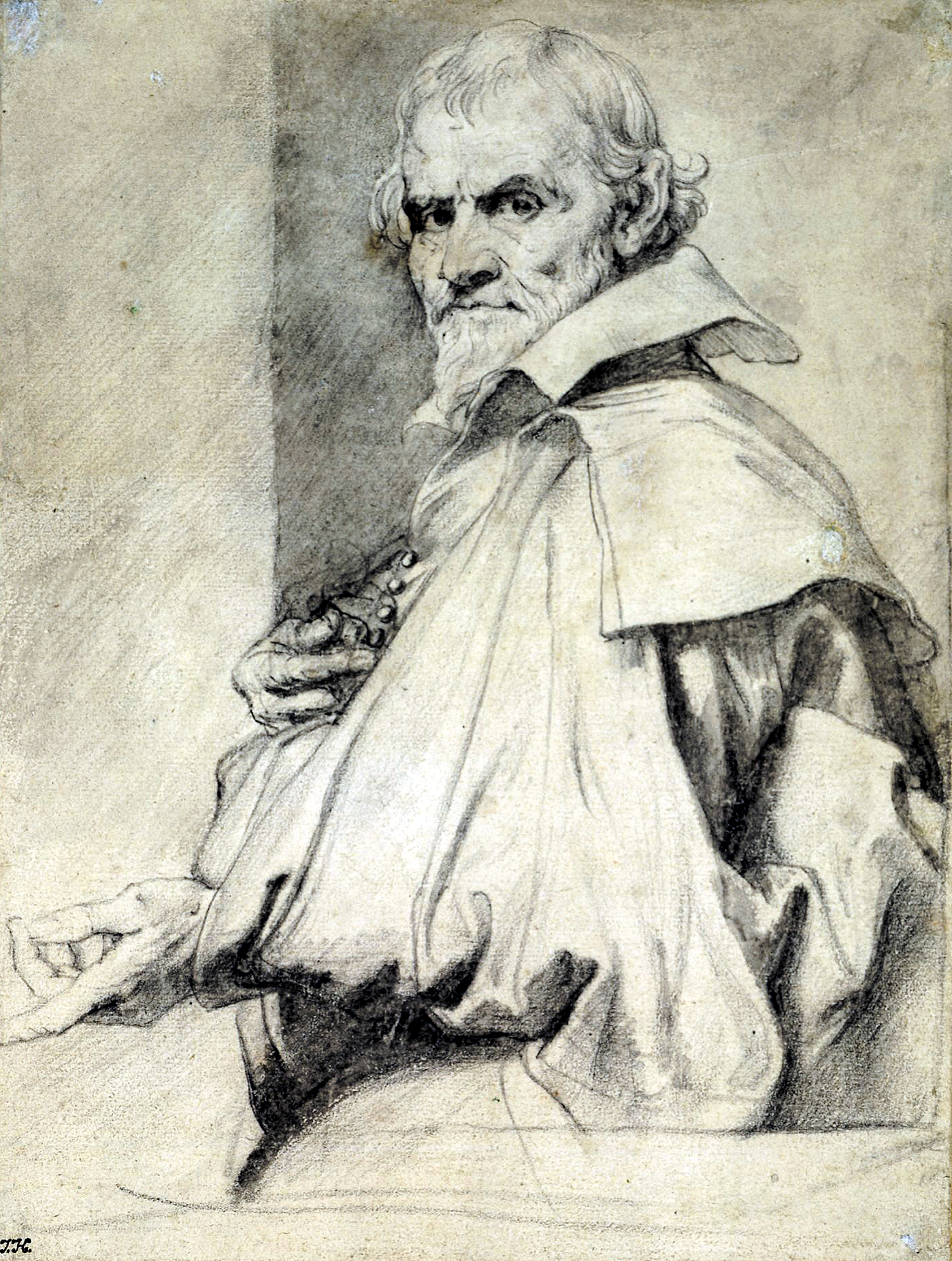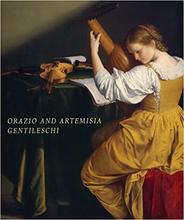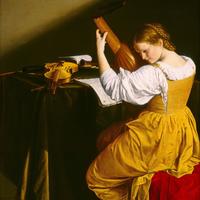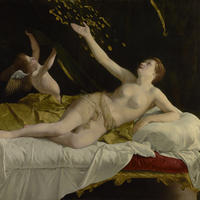More about Orazio Gentileschi
- All
- Info
- Shop
Works by Orazio Gentileschi

Contributor
Orazio Gentileschi loved his daughter, Artemisia. But he may have loved Caravaggio more.
Orazio and Artemisia Gentileschi are right up there with famous father/daughter teams like Tatum and Ryan O’Neal, Eddie and Carrie Fisher, and Jon Voight and Angelina Jolie. Okay, bad examples. But in the late 16th, early 17th century Italy, if you needed a grand history painting or fresco for your villa or basilica, Orazio and Artemisia were the go-to painters of their time. You may be familiar with Artemisia, who in 1612 at 19 years old, was raped by fellow artist, Agostino Tassi. It was dear old dad that pressed charges against Tassi, putting the honor of the Gentileschi family on trial.
It was during this time that Artemisia’s Pop had been working on developing a new style of painting. Before that, he was a proficient fresco-ist and painter of altar pieces in Rome in the Mannerist style, stringing together a living to support his family of four kids, painting for the Vatican, abbeys, and basilicas. Art historians call these early works “dismal,” so don’t even bother hunting them down on your next sojourn to Italy. It had been in 1600, when Orazio saw his first Caravaggio at the Church of San Luigi dei Francesi. While standing in front of The Martyrdom of Saint Matthew in the Contarelli Chapel, the skies parted, a pool of heavenly golden light shown on him while the angels sang. I have no idea if that happened but I’m pretty sure Orazio said, “Merda. Dipingo male,” which translates to “Shit. I suck.”
At thirty-seven years old, Orazio became a disciple of the younger Caravaggio, but Caravaggio was no second-coming. He was a boorish SOB, but Orazio managed to avoid rivalry and jealousy with the nasty drunk, and even lent props to Caravaggio—one being a pair of large, white wings that showed up in dozens of paintings for both. I can’t help fantasizing about what the communication about the wings would sound like if they had contemporary technology. Maybe the texts would read something like this:
Caravaggio: Hey, can I have those wings back???
Orazio: Dude! You just gave them to me! You know I’m a slow painter, I thought you were working on that St. Jerome??
Caravaggio: Not for a painting. They look damn cute on my new apprentice.
Orazio:Dude. You need to stay away from the young boys. You’ll get yourself killed. You’ll disappear into obscurity.
Caravaggio: No way, I’ll be written as one of the greatest painters of all time. You’ll see.
Orazio: *eye roll*
Caravaggio: Wings???
Orazio: I’ll send Francesco with them to your place tomorrow.
Caravaggio: Grazie. You’re the best. Caio!
Orazio: Prego
While closely studying Caravaggio, it took Orazio ten years to go from bland to grand. He mostly learned from Caravaggio how to paint from live models in a dramatic, naturalistic style. This was revolutionary in post-Renaissance Italy when artists commonly painted from memory, giving us a century of weird looking baby Jesuses. Over those years, Orazio developed a beautiful, expressive style, inspired by Caravaggio, but one hundred percent all his own. During his lifetime, he was the most successful of all the artists associated with Caravaggio, traveling around Europe, painting for famous patrons like the Borghese family, Marie de’Medici and King Charles I. His large-scale paintings and even some frescoes (that are worth searching out) are distinctive for their sublime landscapes, sumptuously inviting interiors, and their sensitive, intimate, and disarmingly direct figures.
Sources
- Christiansen, Keith, and Mann, Judith Walker. Orazio and Artemisia Gentileschi. New York: Metropolitan Museum of Art, 2001.
- J. Paul Getty Museum. “Danae and the Shower of Gold.” Los Angeles: Getty.edu, 2016.
- J. Paul Getty Museum. “Orazio Gentileschi in Genoa: Paintings for the Palazzo Sauli.” Los Angeles: Getty.ed, 2002.
- Knight, Christopher. “Getty Purchases Gentileschi’s ‘Danae’ now owns 2 or 3 paintings in set.” LA Times, June 30, 2016.
- Moore, Susan. “Old Masters: trophies of a Golden Age.” Financial Times, November 15, 2015.
Featured Content
Here is what Wikipedia says about Orazio Gentileschi
Orazio Lomi Gentileschi (1563–1639) was an Italian painter. Born in Tuscany, he began his career in Rome, painting in a Mannerist style, much of his work consisting of painting the figures within the decorative schemes of other artists.
After 1600, he came under the influence of the more naturalistic style of Caravaggio. He received important commissions in Fabriano and Genoa before moving to Paris to the court of Marie de Medici. He spent the last part of his life at the court of Charles I of England and died in London. He was the father of the painter Artemisia Gentileschi.
Check out the full Wikipedia article about Orazio Gentileschi













